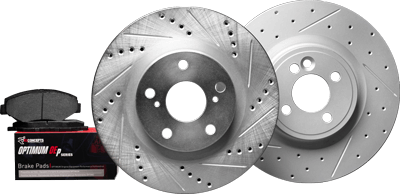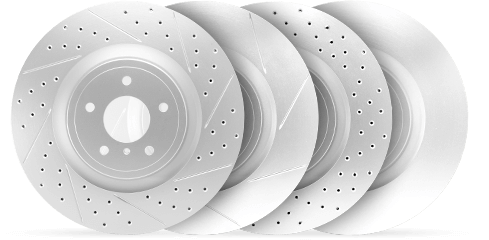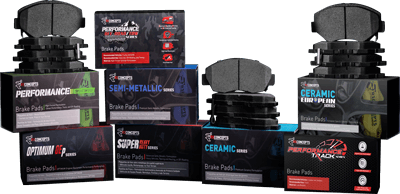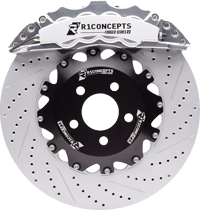Brake pads are one of the most important components of a vehicle’s braking system. They are responsible for providing the friction necessary to slow down or stop a moving vehicle. Brake pads consist of several components, each of which plays a critical role in the braking process. In this article we will discuss how to determine the best car brake pads for your vehicle.
What type of brake pads do I need for my car?
Choosing the right brake pads for your car is crucial for ensuring safety and optimal performance. Different types of brake pads, including ceramic brake pads, semi-metallic brake pads, and organic brake pads, are designed to meet specific driving styles, road conditions, and vehicle types. Understanding the characteristics and best applications of each brake pad type can help you make an informed decision.
Ceramic brake pads tend to be more durable and cleaner, performing well in high brake temperatures. However, they may not be as effective in extreme, low-temperature conditions and are generally more expensive compared to
Organic Brake Pads
Organic brake pads, also known as non-asbestos organic (NAO) pads, are made from a combination of materials such as rubber, glass, resins, and Kevlar. These pads are known for their quiet operation and smooth braking experience. Organic brake pads are particularly suitable for everyday driving in urban environments and for drivers who prioritize comfort over aggressive performance.
These pads work well on standard passenger vehicles that are typically driven on paved roads and in stop-and-go traffic conditions. Organic brake pads provide adequate braking power for light to moderate driving but may not be the best choice for high-performance or heavy-duty applications. They tend to wear out faster than other types of brake pads and may produce more brake dust.
Semi Metallic Brake Pads

Semi metallic brake pads are composed of a mix of metal fibers, such as steel, copper, and iron, along with graphite and other fillers. These semi metallic brake pads like the R1 SUPER Heavy Duty Series Brake Pads are known for their durability and high braking performance, making them a popular choice for a variety of driving styles and road conditions.
Semi metallic brake pads are ideal for both everyday driving and more demanding situations, such as towing or driving on rough terrain. They provide excellent stopping power and heat dissipation, which helps prevent brake fade during intense braking. These pads are well-suited for heavier vehicles, including trucks and SUVs, as well as for drivers who engage in spirited driving. However, they can be noisier and may cause more wear on brake rotors compared to other types.
Ceramic Brake Pads
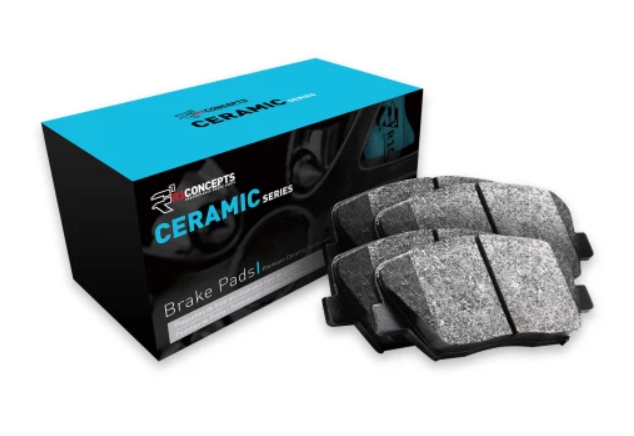
Ceramic brake pads are made from a dense ceramic material combined with fine copper fibers. These pads are renowned for their long lifespan, quiet operation, and low dust production. Ceramic brake pads offer consistent and reliable performance, making them a favorite among many drivers. Ceramic brake pads tend to be durable, clean, and perform well in high brake temperatures, but they can be less effective in extreme, low-temperature conditions and are generally more expensive than other types of brake pads.
These ceramic brake pads like the R1 CERAMIC Series Brake Pads are especially suitable for high-performance vehicles and sports cars, as well as for everyday driving in urban and suburban areas. They handle heat very well, which makes them less prone to brake fade even under aggressive braking. While ceramic brake pads are more expensive than organic or semi metallic pads, their longevity and low maintenance requirements can offset the initial cost. They may not be the best option for extremely cold climates,
High Friction Formulation Brake Pads
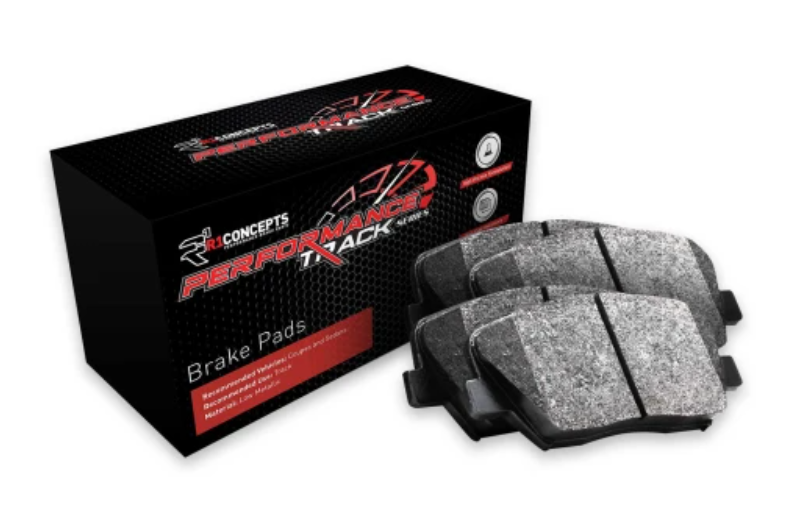
High friction formulation brake pads like R1 PERFORMANCE Track Series Brake Pads are designed for maximum braking performance. These pads are typically used in racing and high-performance driving scenarios where stopping power is critical. Made from advanced materials, high friction formulation pads offer superior grip and heat resistance, ensuring reliable performance under extreme conditions.
These brake pads are best suited for sports cars, racing vehicles, and performance-oriented street cars. They excel on racetracks and in situations where frequent and heavy braking is required. While they provide exceptional stopping power, they can be noisy and may cause increased wear on brake components. Due to their specialized nature, high friction formulation brake pads are not recommended for everyday driving or for use on standard passenger vehicles.
Choosing the right brake rotors for your vehicle is crucial for ensuring optimal performance and safety. Different types of brake rotors are designed to meet specific driving styles, road conditions, and vehicle types. Understanding the characteristics and best applications of each brake rotor type can help you make an informed decision.
Brake Pad Materials and Their Advantages and Disadvantages
Understanding the different materials used in brake pads can help you choose the right ones for your vehicle. Here is a simplified guide to four common types of brake pads: organic, semi metallic, carbon metallic, and ceramic. Each has its own advantages and disadvantages.
Organic Brake Pads
Organic brake pads are made from materials like rubber, glass, and resins. They were developed to replace asbestos, which was found to be harmful.
Advantages:
- Quiet operation, making them less noisy.
- Provide a smooth braking experience.
- Suitable for everyday city driving.
Disadvantages:
- Wear out faster than other types.
- Produce more brake dust.
- Not ideal for high-performance or heavy-duty use.
Semi Metallic Brake Pads
Semi metallic brake pads use metal fibers such as steel or copper mixed with other materials.
Advantages:
- Durable and long-lasting.
- Excellent heat dissipation, which helps prevent brake fade.
- Good for heavy vehicles and performance driving.
Disadvantages:
- Can be noisy, especially when cold.
- Produce more brake dust.
- May cause faster wear on brake rotors.
Carbon Metallic Brake Pads
Carbon metallic brake pads combine metal fibers and carbon.
Advantages:
- Excellent heat resistance and durability.
- Provide strong stopping power and shorter stopping distances.
- Ideal for high-performance driving, racing, and heavy-duty towing.
Disadvantages:
- Produce a lot of brake dust, which can be messy.
- Noisier than other types, especially when cold.
- Can wear down brake rotors faster, increasing maintenance costs.
Ceramic Brake Pads
Ceramic brake pads are made from ceramic fibers and other non-metallic materials. Ceramic brake pads tend to be durable, produce less brake dust, and perform well in high brake temperatures, but they can be more expensive and less effective in extreme, low-temperature conditions.
Advantages:
- Very quiet, even when cold.
- Produce less brake dust, keeping wheels cleaner.
- Good heat resistance and durability.
Disadvantages:
- More expensive than other types.
- Longer break-in period required.
- May not provide as much initial stopping power as carbon metallic pads.
- Not ideal for extreme high-performance or heavy-duty towing.
In summary, choosing the right brake pad material depends on your driving style and needs. Organic pads are good
How do brake pads work?
Brake pads are a critical component of a vehicle’s braking system, and they work by creating friction between the brake pad and the brake rotor. When the driver steps on the brake pedal, hydraulic pressure is applied to the brake caliper, which in turn applies pressure to the brake pads. The brake pads are then squeezed against the brake rotor, creating friction and slowing down or stopping the vehicle.
The friction between the brake pad and the rotor generates a tremendous amount of heat, which can lead to wear and tear on the brake pads over time. To prevent overheating and reduce wear, modern brake pads are made of high-performance materials, such as ceramic, semi-metallic, or organic compounds.
As the brake pads wear down, they need to be replaced. Most brake pads have wear indicators, which are small pieces of metal that rub against the rotor when the brake pads are worn down to a certain point. This produces a high-pitched squealing noise, alerting the driver that it’s time to replace the brake pads.
Parts Of A Brake Pad
Friction Material – The friction material is the part of the brake pad that comes into contact with the rotor. It is made up of a combination of different materials, including metallic fibers, resin, and other fillers. The friction material is designed to wear out over time, as it is subjected to the intense heat generated by the braking process.
Backing Plate – The backing plate is the foundation of the brake pad. It is made of steel and provides a sturdy surface for the friction material to be attached to. The backing plate also helps to dissipate heat generated during braking, preventing the brake pad from overheating and losing its effectiveness.
Adhesive – The adhesive is the material that is used to bond the friction material to the backing plate. It is a high-temperature adhesive that is designed to withstand the extreme heat generated during the braking process. The adhesive is critical to the longevity and effectiveness of the brake pad.
Shim The shim is a thin piece of metal that is placed between the backing plate and the friction material. Its primary purpose is to reduce noise and vibration during braking. Shims can be made of different materials, including rubber, steel, and composite materials.
Wear Sensor – The wear sensor is an optional component that is used to alert the driver when the brake pads are worn down and need to be replaced. It is typically a small piece of metal that is attached to the backing plate and makes contact with the rotor when the friction material is worn down to a certain point. This causes a high-pitched squealing noise that alerts the driver to have the brake pads replaced.
How do I know which brakes to get for my car?
Choosing the right brakes for your car can seem overwhelming with so many options available. However, there are a few key factors to consider to ensure you make the best choice for your vehicle.
Check the owner’s manual: Your car’s owner manual will usually list the recommended brake pad specifications for your car. This is a great place to start your search.
Determine your driving style: If you have a heavy foot, regularly drive in stop-and-go traffic, or frequently tow heavy loads, you may want to consider more durable brake pads that can handle higher temperatures and provide better stopping power.
Consider the brake pad material: There are three main types of brake pad materials – ceramic, semi-metallic, and organic. Ceramic pads are quieter and produce less dust, but are generally more expensive. Semi-metallic pads offer good stopping power and are more affordable, but can be noisy and produce more dust. Organic pads are the most affordable but tend to wear out faster and produce more dust.
Ceramic brake pads tend to be suitable for conservative driving due to their durability, cleanliness, and performance in high brake temperatures. However, they may not perform as well in extreme, low-temperature conditions and are typically more expensive compared to other brake pad types.
Choose a reputable brand: Stick with reputable brands that have a good reputation and have been in the industry for a while. These brands are likely to have undergone extensive testing and will be able to provide you with a quality product.
Consult with a mechanic: If you’re still unsure, consult with a trusted mechanic who can provide you with recommendations based on your specific vehicle and driving habits.
Remember, choosing the right brake pads is essential for ensuring the safety of yourself and your passengers while
When Should Brake Pads Be Replaced?

Brake pads are an essential part of your vehicle’s braking system, and they need to be replaced periodically to ensure that your car can stop safely and effectively. However, it can be challenging to know precisely when to replace your brake pads.
One sign that it’s time to replace your brake pads is when you hear a grinding or squealing noise when you apply the brakes. This noise is caused by the brake pad’s wear indicator rubbing against the rotor, indicating that the pads have worn down to a point where they need to be replaced.
Another indicator that your brake pads need to be replaced is if you notice a vibration or pulsation when you apply the brakes. This could be due to uneven wear on the pads, which can cause the rotor to warp or become damaged.
It’s also a good idea to have your brake pads inspected regularly during routine maintenance to ensure they are still in good condition. Most manufacturers recommend having your brake pads checked every 10,000 to 20,000 miles, depending on your driving habits and the type of brake pads you are using.
Brake Shoes Vs. Brake Pads
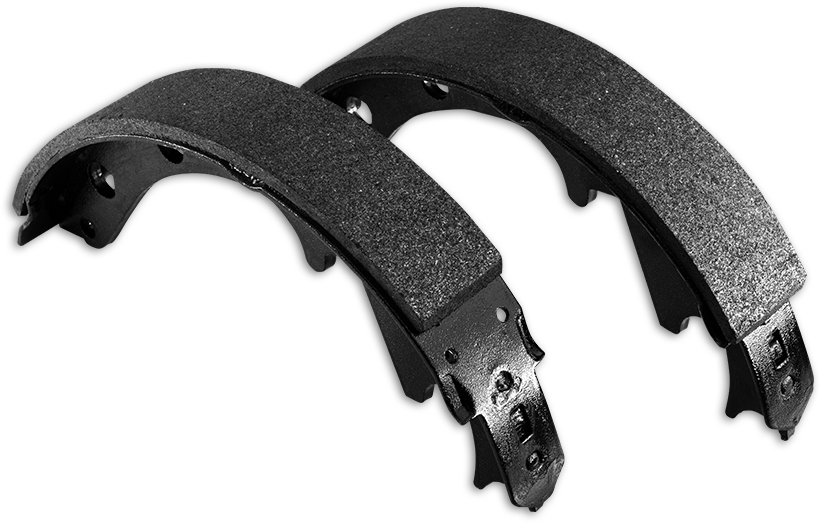
When it comes to braking systems, brake pads and brake shoes are two common components used in different types of vehicles. While they perform a similar function, there are some differences between the two.
Brake pads are used in disc brake systems and are designed to press against the rotor to slow down the vehicle. They are typically made of a combination of metallic, organic, or ceramic materials that can withstand high temperatures and provide reliable stopping power.
Brake shoes, on the other hand, are used in drum brake systems and are designed to press against the inside of a drum to slow down the vehicle. They are typically made of a similar combination of materials as brake pads but are shaped differently to fit the curvature of the drum.
One advantage of brake shoes is that they can provide more consistent braking performance over a longer period, as they have a larger surface area in contact with the drum compared to brake pads on a rotor. However, drum brakes can be more prone to overheating and fade under heavy use, making them less suitable for high-performance applications.
Brake pads, on the other hand, offer superior stopping power and are generally easier to service and replace. They are also less prone to overheating and provide better performance in wet or rainy conditions.ls, and are designed to offer the best of both worlds – high performance and low noise and dust.
What Are The Risks Of Driving With Worn Brake Pads?

Driving with worn brake pads can be dangerous and poses several risks to both the driver and other road users. The most significant risk of driving with worn brake pads is reduced braking power. This means that it will take longer to stop the vehicle, which can result in accidents, especially in emergency situations. Worn brake pads can also cause uneven wear on the brake rotor, which can lead to costly repairs.
Additionally, worn brake pads can cause vibrations and noises when applying the brakes, which can be an indication of a more significant problem with the braking system. Furthermore, worn brake pads can also cause damage to other parts of the vehicle, such as the calipers and rotors. This can lead to expensive repairs that could have been avoided with timely brake pad replacement.
Therefore, it is essential to regularly inspect your vehicle’s braking system and replace worn brake pads as soon as possible. It is recommended to replace brake pads every 25,000 to 70,000 miles, depending on the driving conditions and type of brake pad. Always consult with a qualified mechanic for advice on when to replace your brake pads.
Brake Pad Diagnosis And Troubleshooting
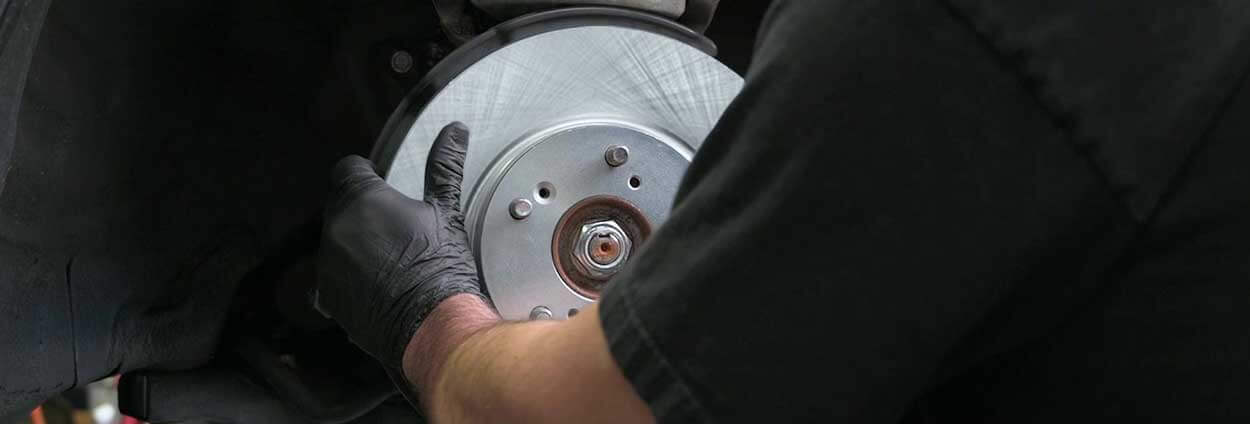
Regular inspection of the brake system is essential to ensure that it is functioning properly. Here are some common brake rotor pad diagnosis and troubleshooting techniques to help you identify and fix potential problems:
Squeaking or Squealing: A common sign of worn brake pads is a squeaking or squealing noise when the brakes are applied. This can be caused by the brake pad’s wear indicator, a small piece of metal that contacts the rotor when the pad is worn down to a certain level.
Grinding: If the brakes are making a grinding noise, it could indicate that the pads are worn down completely and are grinding against the metal rotor. This can cause significant damage to the rotor and should be addressed immediately.
Vibration: If you feel a vibration or pulsation in the brake pedal when applying the brakes, it could be due to warped brake rotors. The rotors can become warped due to excessive heat or uneven wear, causing the brake pads to make uneven contact with the rotor surface.
Pulling: If the vehicle pulls to one side when the brakes are applied, it could be due to a stuck caliper or uneven brake pad wear.
Soft Pedal: If the brake pedal feels soft or spongy when pressed, it could be due to air in the brake lines, worn brake pads, or a faulty master cylinder.
Warning Lights: If the brake warning light on the dashboard is illuminated, it could indicate a problem with the brake system, such as low brake fluid or a malfunctioning sensor.
How To Choose Brake Rotor Pads
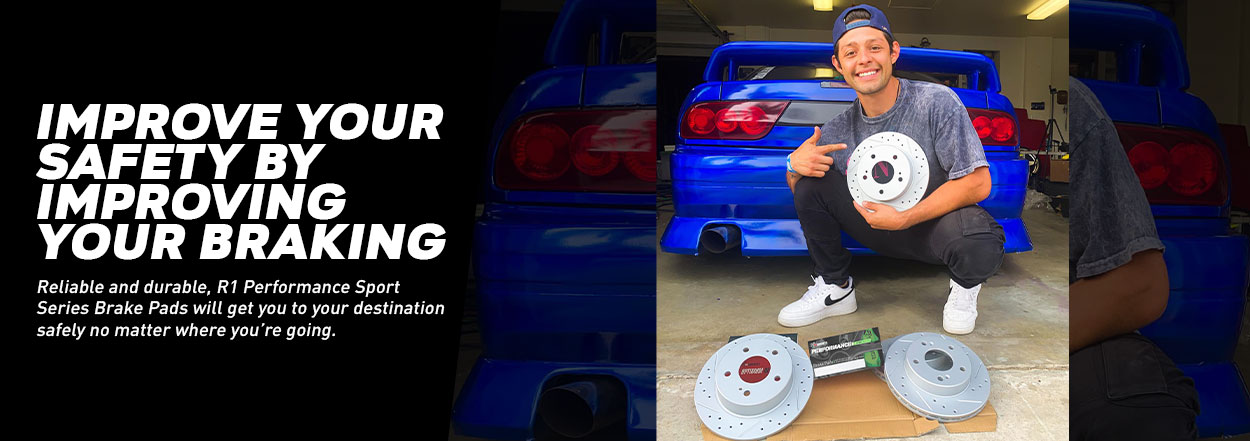
When it comes time for brake pad replacement you need a style which can meet multiple demands. Your car needs brake pads that fit your vehicle. It is also possible that drivers have extreme driving conditions. Heavy-duty vehicles need brake pads capable of withstand intense braking and high temperature conditions. In an average automobile, that may seem less relevant. You may need the average brake pad that performs well at a lower cost. While there’s no brake pad to match every description you’ve got a pad for your vehicle. This section will show you the right brake pads for you.
Choosing The Right Type For Your Application And Conditions
Choosing the right type of application for your specific conditions is crucial for achieving the best performance and functionality. Different applications have unique features that make them suitable for specific purposes and conditions. Factors such as environment, usage frequency, load capacity, and power source all play a role in determining the right type of application for your needs. For instance, if you’re looking for a tool to use in wet or corrosive environments, you might need to choose an application made of corrosion-resistant materials. Understanding your needs and the conditions of your application can help you choose the right type of application to achieve your desired results.
Keeping The Brake Lines And Hoses In Good Conditions
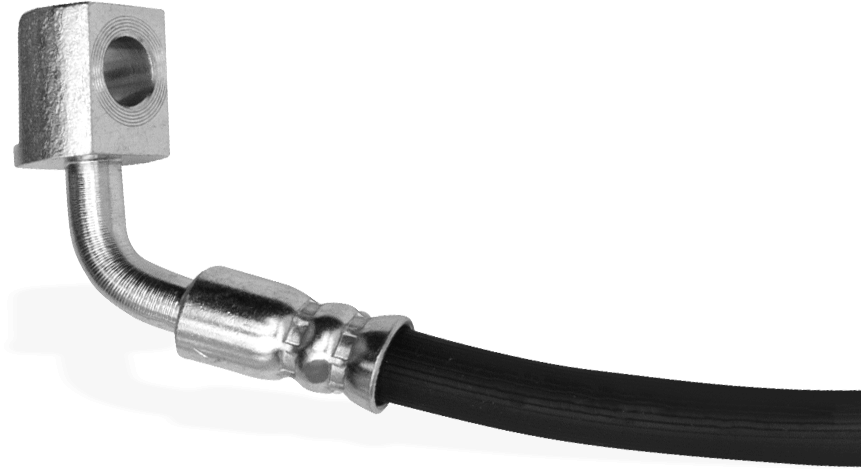
A spill on your brakes can reach your wheels and brake pads. This could lead brake pads to decrease their brake force. Those pads will require replacement even after their normal lifecycle has ended. Ensure the piston of the caliper is properly cleaned and the seals have no wear. These leaks can damage brake fluid or brake pads. While keeping your brakes clean and maintained is advisable, it is a good habit to use them.
How To Check Brake Pads Without Removing Tire
Next, look through the spokes of the wheel to see the brake rotor and the brake pads inside the caliper. If the brake pads look thin and worn, it’s time to replace them. You can also use a flashlight to get a better look.
Another way to check the brake pads is to listen for a high-pitched squealing sound when you apply the brakes. This sound is caused by a small metal tab on the brake pad that is designed to make noise when the pad is worn down. If you hear this sound, it’s a clear indication that the brake pads need to be replaced soon.
It’s important to regularly check your brake pads to ensure that they are in good condition. Worn brake pads can lead to longer stopping distances and increased risk of accidents. If you are unsure about the condition of your brake pads, it’s always best to take your car to a qualified mechanic for an inspection.
How Do You Replace Brake Pads?
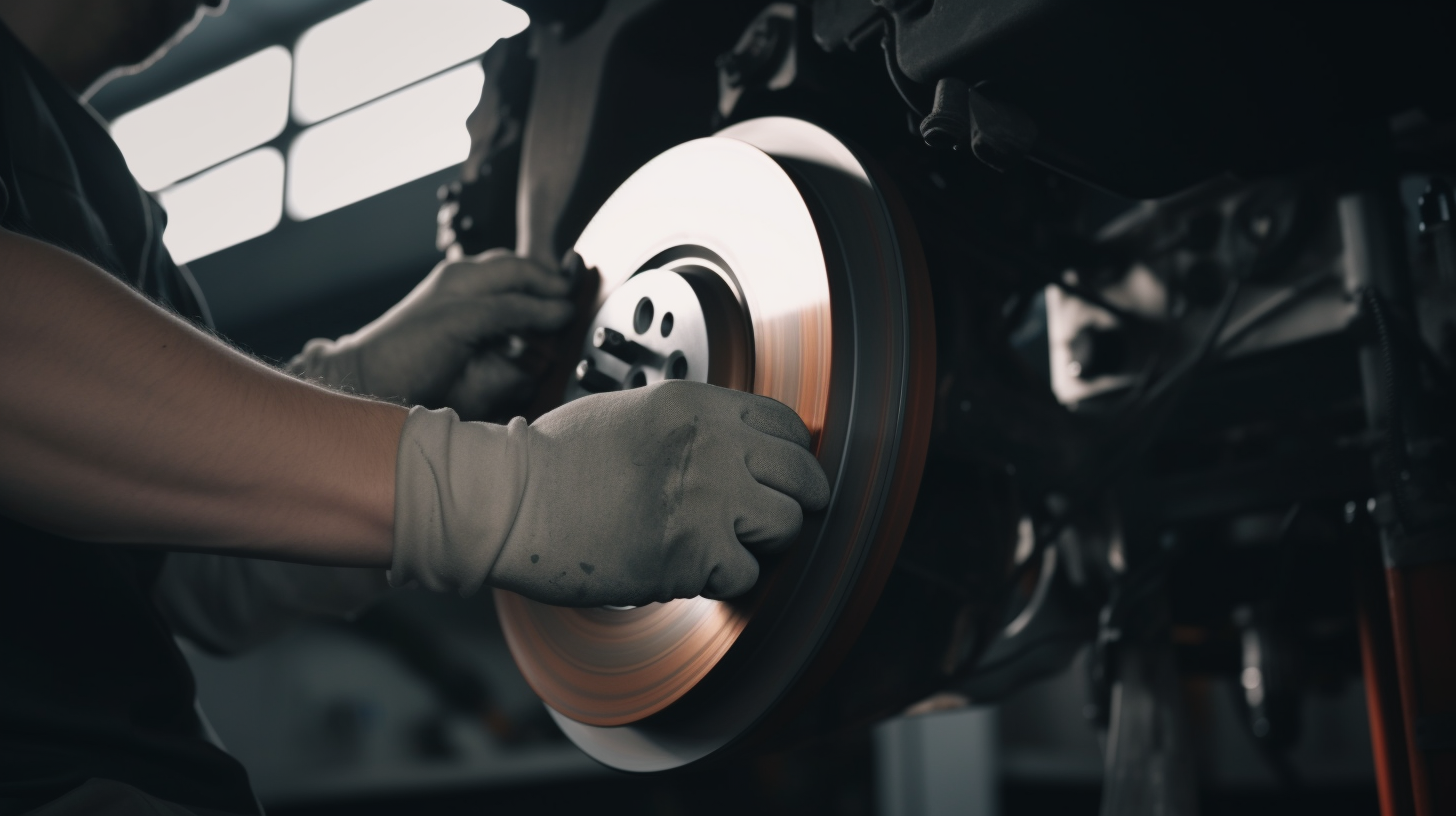
Replacing rear brake pads can seem intimidating, but it is a task that can be completed with some patience and attention to detail. Here is a step-by-step guide on how to replace the rear brake pads on your car:
Gather the necessary tools and materials: You will need a jack, jack stands, lug wrench, socket wrench, brake caliper piston tool, brake cleaner, and new brake pads.
Loosen the lug nuts on the rear wheel, but don’t remove them just yet.
Jack up the car and secure it on jack stands.
Remove the lug nuts and take off the rear wheel.
Locate the brake caliper, which will be held in place by bolts on the backside of the caliper.
Remove the bolts and carefully pull the caliper off the rotor. It may take a bit of wiggling to get it free.
Hang the caliper out of the way using a bungee cord or wire hanger. Do not let it hang by the brake hose.
Remove the old brake pads and shims from the caliper bracket.
Clean the caliper bracket with brake cleaner and a wire brush.
Install new brake pads and shims into the caliper bracket.
Use the brake caliper piston tool to push the piston back into the caliper. This is necessary to create enough space for the new, thicker brake pads.
Slide the caliper back onto the rotor and secure it with the bolts.
Repeat steps 5-12 on the other side of the car.
Put the rear wheel back on and tighten the lug nuts.
Lower the car off the jack stands and tighten the lug nuts again in a star pattern.
Pump the brake pedal a few times before driving to ensure the new pads have made contact with the rotor.
Replacing the rear brake pads on your car can be a DIY project if you have the right tools and some basic knowledge. However, if you are not comfortable doing it yourself, it’s always best to take your car to a qualified mechanic.
Things to Consider Before Buying Brake Pads

When it comes to purchasing brake pads for your vehicle, it’s important to consider a few key factors. Here are some things to keep in mind before making your purchase:
Type of brake pads: There are several types of brake pads available, such as ceramic, organic, and metallic. Each type has its own advantages and disadvantages, so it’s important to choose the one that best suits your driving style and needs.
Compatibility: Not all brake pads are compatible with every type of vehicle. Make sure to check the specifications of the brake pads to ensure they are compatible with your car or truck.
Quality: The quality of the brake pads is crucial for safety and performance. Look for trusted brands and read reviews from other customers to ensure you’re purchasing a quality product.
Price: While it’s tempting to opt for the cheapest brake pads available, it’s important to remember that quality often comes with a higher price tag. However, that doesn’t mean you should overspend. Look for brake pads that offer a good balance of price and quality.
Driving conditions: Consider the type of driving you do and the conditions you encounter on a regular basis. For example, if you do a lot of highway driving, you may want to consider brake pads that are designed for high-speed performance.
Noise and dust: Some types of brake pads produce more noise and dust than others. If these factors are important to you, look for brake pads that are designed to minimize noise and dust production.
By considering these factors, you can make an informed decision when purchasing brake pads for your vehicle.
Could You Change Brake Pads Without Changing Rotors?
Yes, it is possible to change brake pads without changing rotors, as long as the rotors are in good condition and meet the manufacturer’s specifications. However, if the rotors are worn or damaged, it may be necessary to replace them to ensure proper braking performance and safety.
Updated Date: June 10, 2024
Updated By: Annjocel Gapasin


